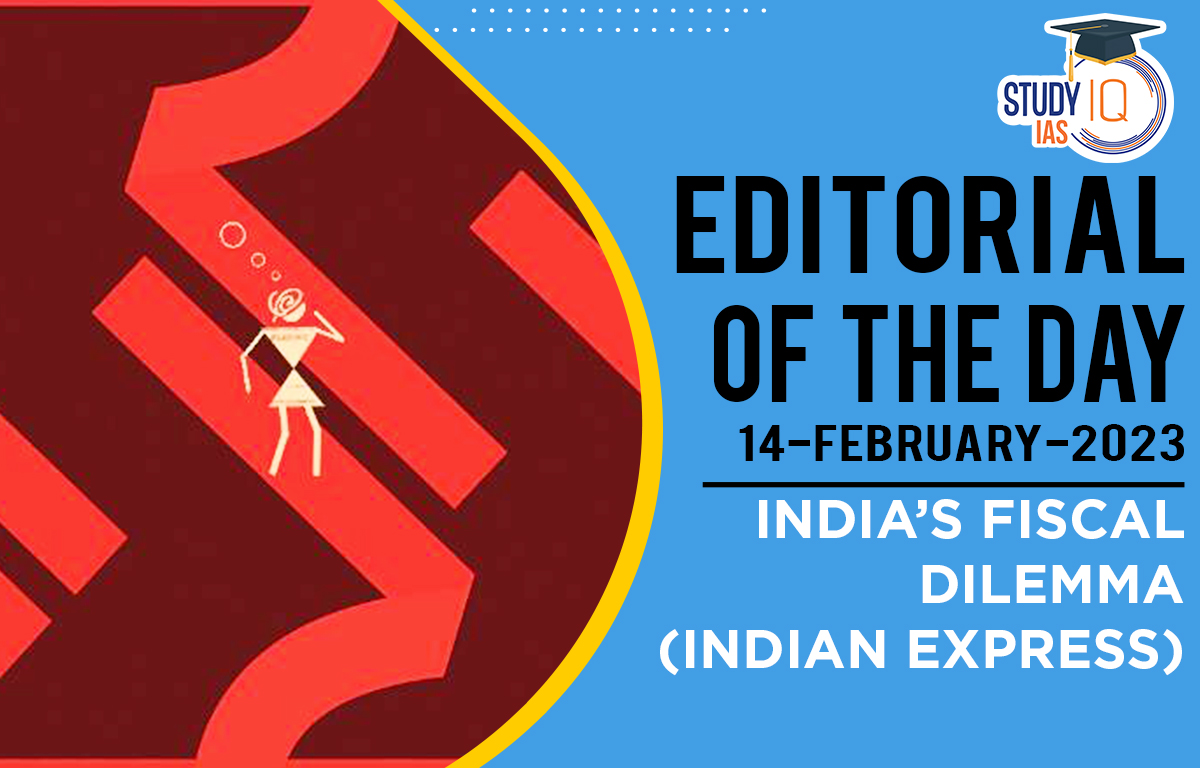The Union Budget 2023-24 provides a good opportunity to take stock of the fiscal situation as this is the first ‘normal’ budget after 2018-19.
- The 2019-20 year witnessed the NBFC crisis; 2020-21 saw the pandemic and 2021-22 the recovery, while 2022-23 had a global turmoil in the wake of the Russian invasion of Ukraine.
The comparison with FY 2018-29 helps us come to the following conclusions:
| Positive Indicators |
- Tax collection: Tax collections as GDP percentage are actually marginally higher than they were in 2018-19.
- Capital expenditure: Capital expenditure has grown from 1.5 per cent of GDP to a budgeted 3.5 per cent of GDP.
- Fiscal deficit: Fiscal deficit is witnessing a fall, budgeted to fall to about 6 per cent of GDP next year from a Covid peak of more than 9 per cent.
|
| Mixed Indicators |
- Narrow tax base: Personal income is increasing mainly due to increase in exemption limits. This means that taxation is now resting on a narrower base of taxpayers.
- GST collection: GST collection ratio has remained the same as it was five years ago, largely because efficiency gains have been offset by repeated reductions in rates.
- Corporate tax collection: Corporate tax revenues have declined because tax rates have been reduced, offsetting the returns from the improved profitability and market share gains of large corporations.
|
| Negative Indicators |
- Increase in expenditure: There has been a significant increase in expenditures over the past five years, exceeding 1.5 percentage points of GDP.
- As a result, the structural fiscal deficit will be 6 per cent of GDP next fiscal.
- Higher borrowing: Previous fiscal deficits have necessitated large amounts of borrowing, which have pushed up interest obligations. They derive nearly half of the centre’s tax revenues.
- Centralisation: The states will receive just 31 per cent of gross tax revenues next fiscal, compared with 37 per cent in 2018-19. The revenue generated through cesses by centre, are not shared with the states.
- Non-interest, non-subsidy current expenditure is being compressed by 1 percentage point of GDP in 2022-23 and 0.5 percent of GDP next year.
- The centre is doing this by scaling back its transfers to states for various centrally sponsored schemes. Some of this is justified as economy is recovering.
- Even though this move helps the states to improve their efficiency, it puts significant pressure on state government expenditures.
|
Implications on Fiscal Performance
- Decline in capital investments: Despite increase in the centre’s capital spending, investment by the overall public sector has actually declined because the states (especially public sector undertakings) have reduced their spending.
- Other parameters: The centre’s structural deficit has grown, overall debt has risen to 85 per cent of GDP, and interest obligations have increased considerably.
Conclusion
- The centre’s fiscal consolidation strategy relies heavily on centralisation, which has both limits and limitations.
- Limits: Even in a good scenario, there is only restricted consolidation that can be achieved in this fashion. The centre has to look at other ways to reduce the deficit to its target of 4.5 per cent of GDP.
- Limitations: Centralisation may not lead to improved efficiency, but would result in a redistribution of resources from the states to the centre.
- States would either be forced to reduce the services to their people or would need to increase their borrowing, leading to further degradation of their fiscal position.
Sharing is caring!


 Daily Quiz 11 July 2025
Daily Quiz 11 July 2025
 Operation Baam: Baloch Separatist Group ...
Operation Baam: Baloch Separatist Group ...
 Article 326 and Electoral Roll Revision ...
Article 326 and Electoral Roll Revision ...





















